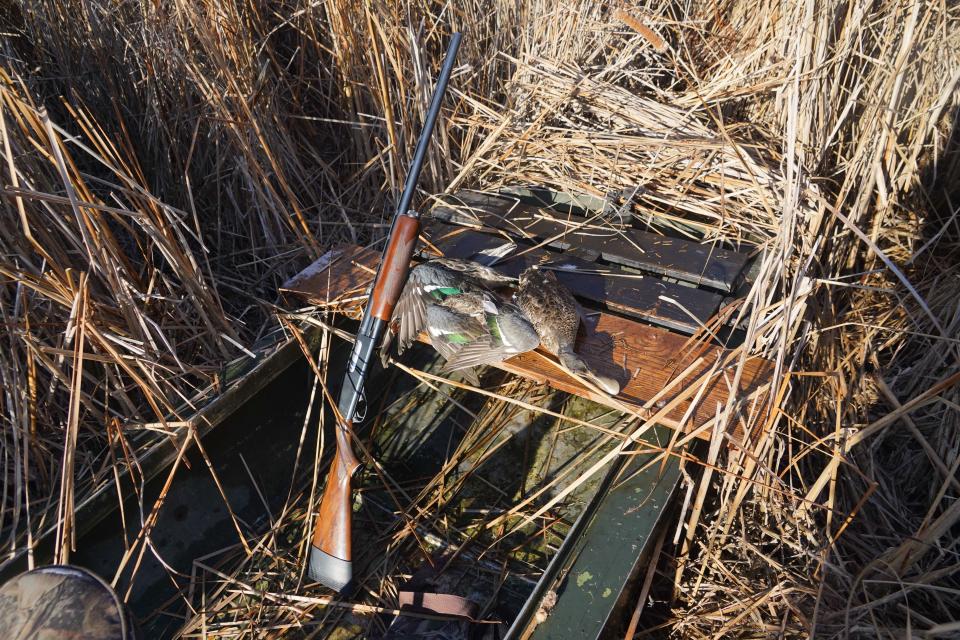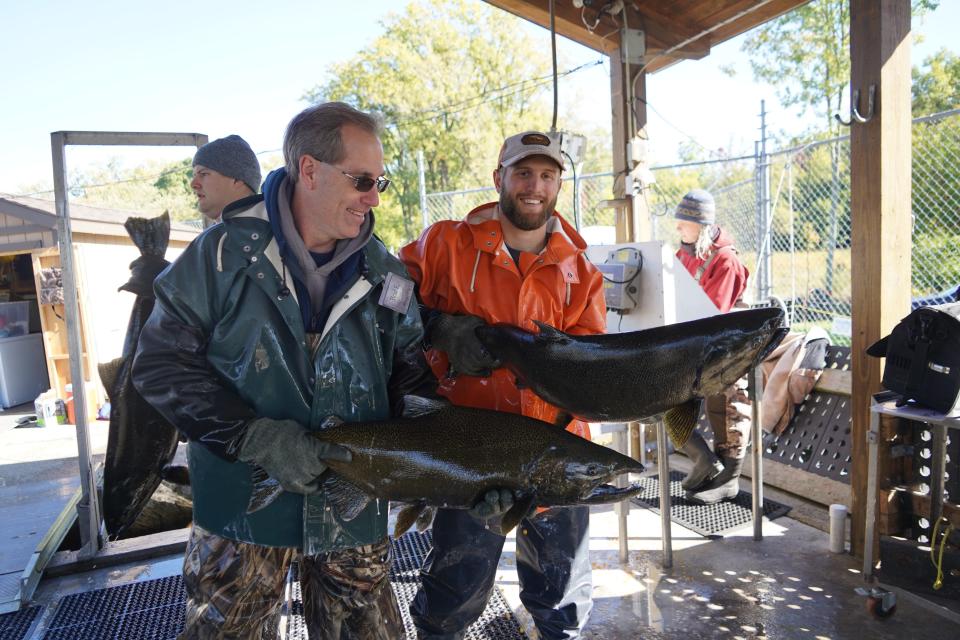Smith: Wildlife and Sport Fish Restoration programs an annual highlight in tax season

With tax return deadlines looming, March brings reminders to most Americans of bills to be paid to governmental entities.
In the conservation realm, this time of year is also noted for financial disclosures and transfers of funds.
But in one notable instance it's a federal agency - the U.S. Fish and Wildlife Service - distributing funds to states and territories through its Wildlife and Sport Fish Restoration programs.
To be clear, it's not some sort of gift or windfall. The funds are derived from excise taxes paid on firearms and ammunition, hunting, archery and fishing equipment and boat fuel.
So it's a case of users and consumers paying into funds that are designed to return a benefit.
But I feel it's important to recognize this process at least once a year.
Not only do the WSFR programs result in critical investments in a slew of important projects and initiatives but the annual funding helps highlight the continuing role the shooting sports, hunting and fishing play in supporting conservation in the U.S.
The WSFR programs can be traced to the Pittman-Robertson Act of 1937.
For perspective, the early 20th century was a dismal time for wildlife in the U.S. It was marked by market hunting, few if any fish and game laws, environmental degradation and loss of habitat.
More: Airguns for big game hunting are among six outdoors-related bills signed into Wisconsin law
The populations of once-abundant species such as white-tailed deer, wild turkey and Canada goose plummeted. Wisconsin was devoid by 1900 of elk and wild turkey.
Nationally many people feared the wood duck and sandhill crane would go extinct.
But history has proven the darkest times can lead to brighter futures. Americans noticed the problems and resolved to take corrective actions.
Among the most impressive things to me is the time the legislation was enacted: In the early 1930s our country was struggling mightily to emerge from the Great Depression.
Yet hunters and manufacturers rallied to create a self-imposed tax on firearms and ammunition to help fund conservation programs. The Wildlife Restoration Act was passed in 1937. (The Federal Duck Stamp was also born in the same era).
The "user pay, user benefit" strategy of Pittman-Robertson was later embraced by the fishing industry through the Dingell-Johnson Act of 1950 and the boating industry through the Wallop–Breaux Amendment of 1984.

The wildlife restoration program collects its funds through excise taxes on the sale of shotguns and rifles (11%), ammunition (11%), archery equipment (11%) and handguns (10%). The sport fish restoration program obtains its money through a 10% excise tax on fishing rods, reels and lures as well as a motorboat fuel tax.
The federal government collects the excise taxes from manufacturers and, based on a formula that includes geographical size and number of hunting and fishing licenses sold, distributes the monies to all 50 states and several U.S. territories.
No state receives more than 5% nor less than 0.5% of the total funds available. The grants typically fund up to 75% of project costs, and most grantees must provide a matching share of up to 25%, often from hunting and fishing license revenues.
Over the decades the Service has distributed more than $28 billion through annual apportionments for state conservation and public access projects, which have been matched by approximately $9 billion in investments by recipient fish and wildlife agencies, according to federal data.
Through these combined funds, agencies have supported the stocking of 1 billion fish, managed and monitored more than 500 species of mammals and birds, provided hunter education to 1 million students and constructed or renovated more than 850 target ranges, according to the Service.
More: Ordinance to prohibit wake surfing being challenged on Waupaca chain of lakes
Smith: As populations decline elsewhere, a Wisconsin wild turkey research project begins
The Service on March 4 published its 2024 WSFR allocations.
This year $1.38 billion is scheduled to be distributed from the programs, down from the record $1.6 billion in 2023 but still at the upper tier of history.
Broken down by program, this year the federal Wildlife Restoration account will allocate $989.5 million while its Sport Fish counterpart will make available $381.8 million.
In Wisconsin the funds are received by the Department of Natural Resources. The 2024 total share for the Badger State is $39.5 million, also down from last year's record of $46.8 million and $43.7 million in 2022 but up from $32.4 million in 2021.
The reductions are predominantly due to a year-over-year drop in sales of firearms and ammunition, the largest contributors to the excise tax pools.
Don't be misled by the drop from 2023 levels - the funding is near historical highs and critical to help the DNR conservation fund stay afloat.
This year the DNR will receive $27.7 million from the federal wildlife restoration fund and $11.8 million from the fish restoration account.
The federal programs have proven their value across the decades. While recognizing their importance to conservation, please also note: no other industry has adopted the excise tax model.
Although it has been suggested many times, manufacturers of camping, birding, bicycling, paddling, hiking, skiing and other outdoors- or wildlife-related equipment, have declined to push for legislation similar to PR or DJ on their products.
However all these user groups - in fact all Amercians - have benefited from improvements to U.S. wildlife and fish populations, public lands and outdoor facilities such as boat ramps funded through the WSFR programs.
So I know it isn't likely to ease the pain of writing a check to Uncle Sam next month. But as we acknowledge the 2024 WSFR allocations, take a moment to also appreciate the continuing contributions of excise taxes from shooters, hunters and anglers, one of the brightest legacies in the history of U.S. conservation.
This article originally appeared on Milwaukee Journal Sentinel: Wildlife and Sport Fish Restoration programs a highlight in tax season

